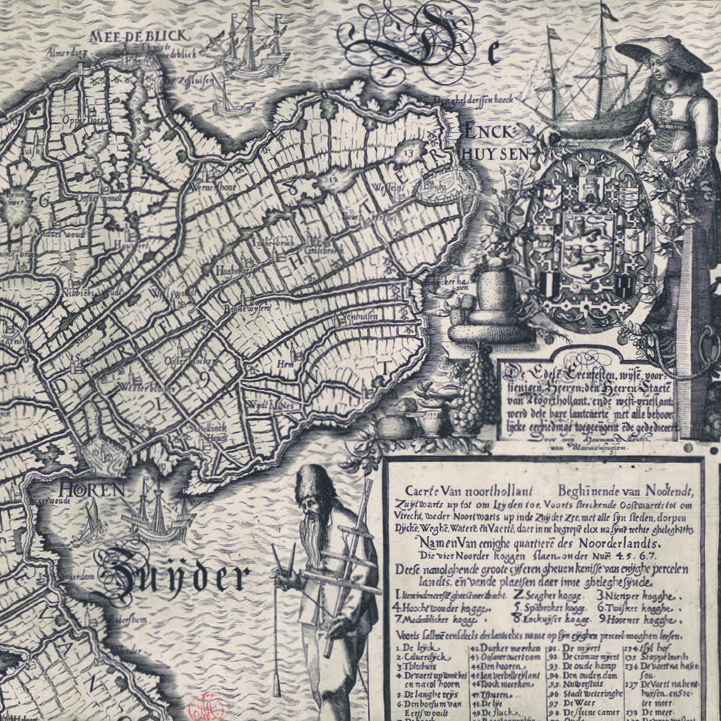On the Thresholds of an Old Map
A Paracartographic Approach to Joost Jansz Bilhamer’s Caerte van Noorthollant
DOI:
https://doi.org/10.52476/trb.17720Abstract
In what contexts were old maps made and used? What values did map users attach to documents like these, in their own time and afterwards? In this article we apply the ‘paracartographic approach’ to the edition of Joost Jansz Bilhamer’s Caerte van Noorthollant from 1608 to answer questions about the socio-cultural context, meaning and reception of old maps. First, we analyze the perimap (elements in the immediate surroundings of the map, e.g. cartouches, titles, legends) and then search for different forms of the epimap (elements outside the immediate surroundings of the map, e.g. reproductions, provenance notes, patents), among other things by studying contextual documentation about the production and consumption of the map. We explain the merits of the interpretation of the perimap and epimap and, thanks to the analysis, come up with a new hypothesis about the production and use of the map: as a means of promoting the Northern Quarter and West Friesland. With this case study we hope to expand and update knowledge of the Rijksmuseum’s cartographic collection and to encourage scholars, curators, collectors and map lovers to look beyond the spatial data old maps provide.
Downloads







